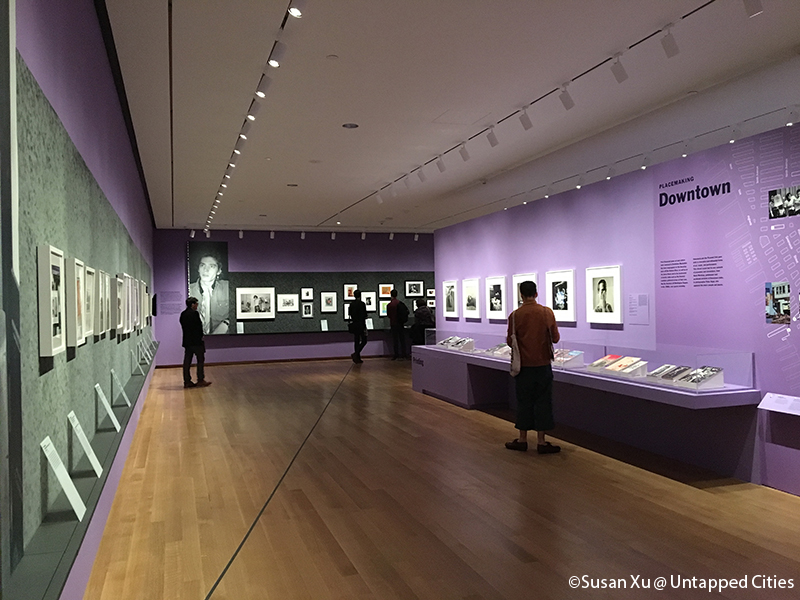
Walking through the exhibition space of Gay Gotham: Art and Underground Culture in New York is a whirlwind experience – purple being the theme color of the journey. The groundbreaking show, which opens on October 7th at the Museum of the City of New York, unfolds like a story as it explores New York City’s role as a “beacon” for LGBTQ artists seeking acceptance.
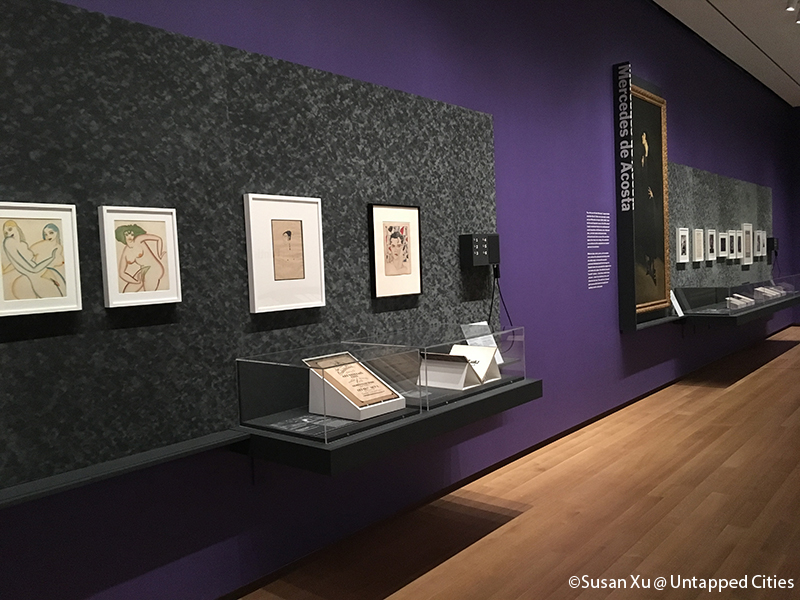
Gay Gotham features 225 pieces of work produced by various LGBTQ artists; many are iconic, others, lesser known, and some anonymous. Specifically, it highlights the artistic achievements of ten individuals, whose portraits can be found displayed on the walls of the galleries. In terms of depth and scope, it is the first exhibition of its kind to be presented in a New York City cultural institution. Even so, no other setting would have been appropriate to tell such a story.
“New York City, an international source of creativity thought its history, provided the canvas, stage and backdrop for LGBTQ artists and cultural innovators, and helped make it possible for them to transcend oppression and discrimination,” says Whitney Donhauser, Ronay Menschel Director of the Museum of the City of New York.
“Gay Gotham not only exhibits, but also celebrates the vibrant lives of artists who were suffering from injustice, and offers optimism for tomorrow.”
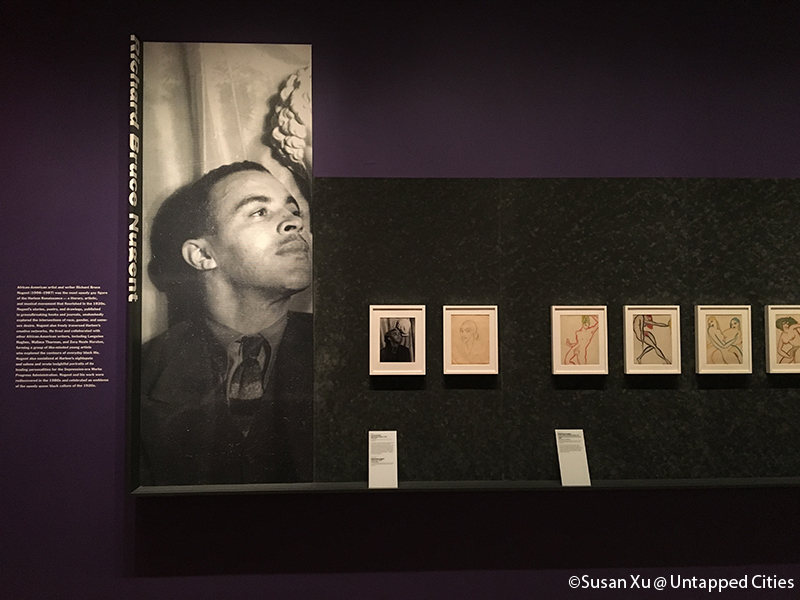 Artist and writer Richard Bruce Nugent was the most openly gay figure of the Harlem Renaissance
Artist and writer Richard Bruce Nugent was the most openly gay figure of the Harlem Renaissance
The narrative covers the span of the 20th century, and occupies two entire galleries, the first of which is painted in a deep shade of lavender that evokes a sense of heaviness. The color choice is appropriate for the first section of the exhibit, which focuses on the years 1910-1960, before the emergence of the gay rights movement.
Although the early 1900s (1910s-1920s) were marked by a period of relative openness, particularly in Harlem and Greenwich Village, queer culture soon came under attack in the 1930s through to the ’50s. Fearing oppression and marginalization, many artists chose to go into “the closet,” and thrived under queer artistic circles and networks, which – as the exhibit points out – were developed in fours ways: 1) place-making (creating places to gather), 2) posing (creating portraits of each other), 3) printing (creating publications) and 4) performing (representing LGBTQ life in shows).
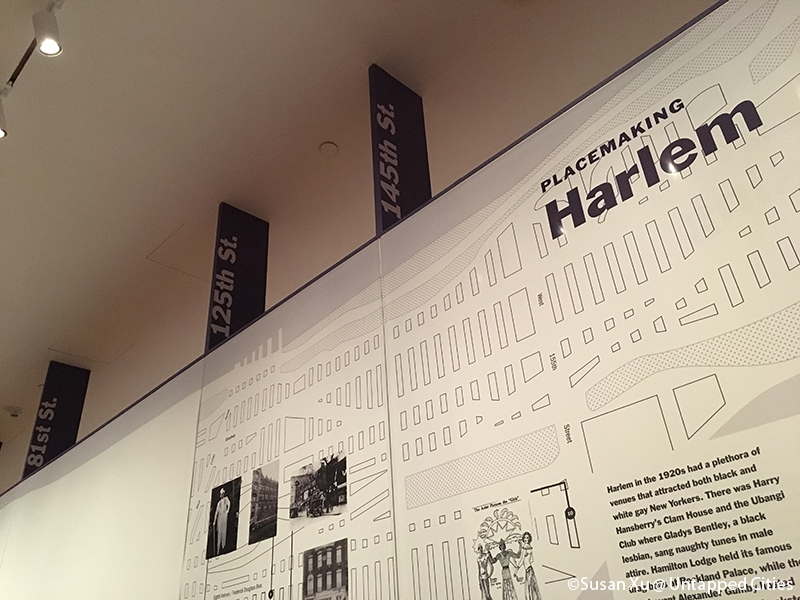
It was partly due to such social spheres that artists were able to advance their careers and continue to produce their art. By the 1960s, growing activism against homophobia gave way to the birth of the modern LGBT rights movement, which was propelled by the Stonewall riots of 1969. This landmark event and the political revolution that followed is the subject of the second gallery, which covers the years 1960 to 1995.

Serving as a bridge between the two galleries is Andy Warhol, one of the ten artistic figures of the show. Upon entering the room, the transition between the censorship of the ’50s to the newfound openness of the ’70s is immediately felt, not only through the artwork, but through the gallery itself. The walls are no longer deep lavender; they are painted in a lighter, brighter shade of purple.
In this section of the exhibit, sexually explicit works depict the change in attitude: a number of publications, with titles such as DYKE and Come Out!, are found in display cases; a series of photographs portray men posed in sexually suggestive positions; a projector plays a clip from a Broadway musical with LGBT themes.
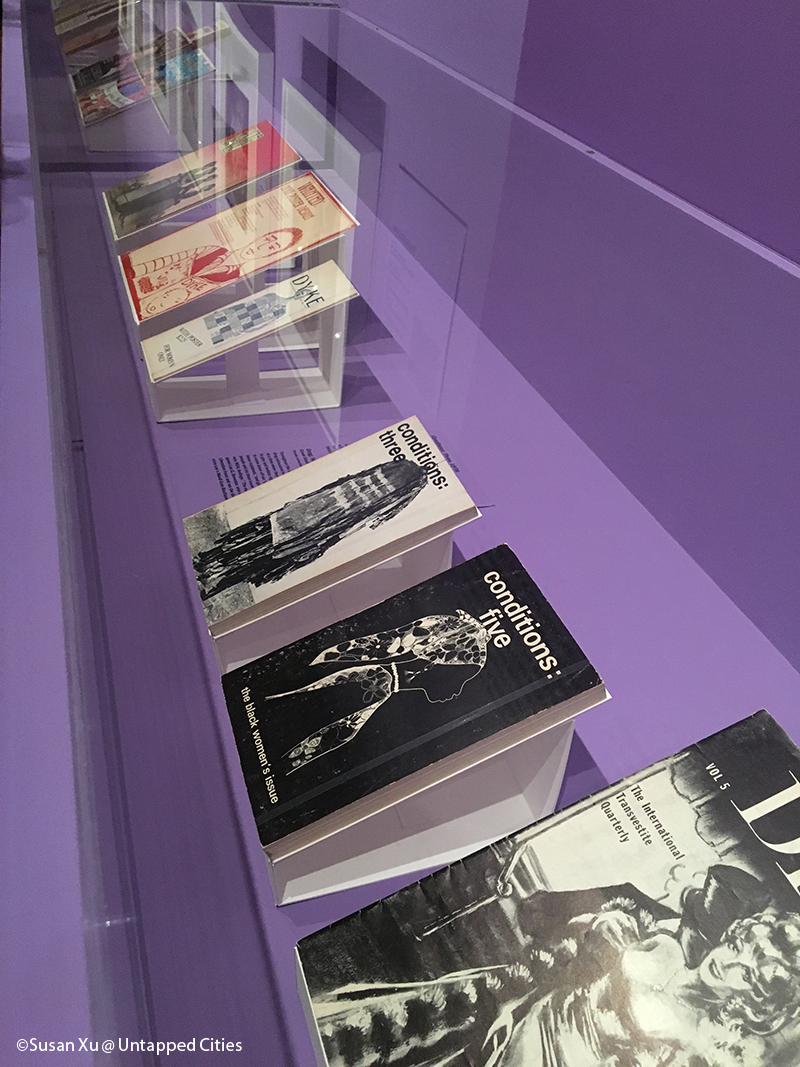
Altogether, the works help to shed light on an often hidden-side of New York City’s history. Yet, unlike most stories, this particular narrative has no beginning or conclusion. Rather, it’s a slim chapter of a boundless book.
Gay Gotham: Art and Underground Culture in New York, curated by Donald Albrecht, MCNY curator of architecture and design, and Stephen Vider, MCNY Mellow Postdoctoral Fellow, is being presented at the Museum of the City of New York, 1220 Fifth Avenue (at 103rd Street) until Feb. 26, 2017. Additional programming is also scheduled to take place. For more information, visit Gay Gotham.
Next check out 10 Notable LGBT Landmarks and Sites in NYC and NYC LGBT Historic Sites Project Begins Archiving Sites Across the Five Boroughs.





